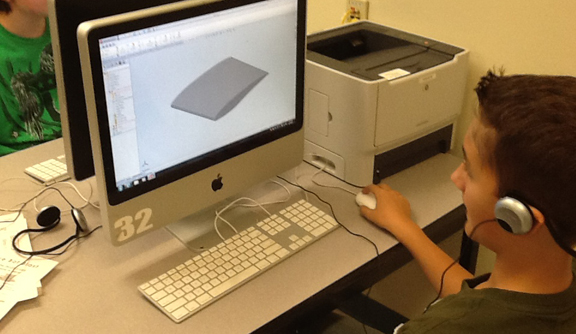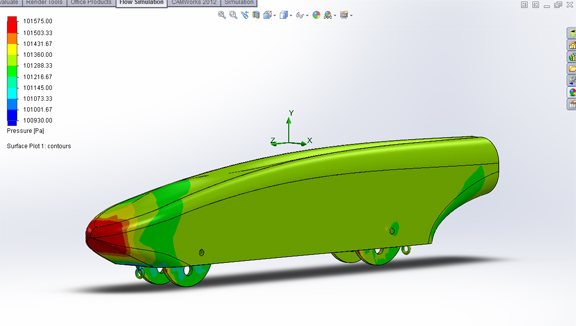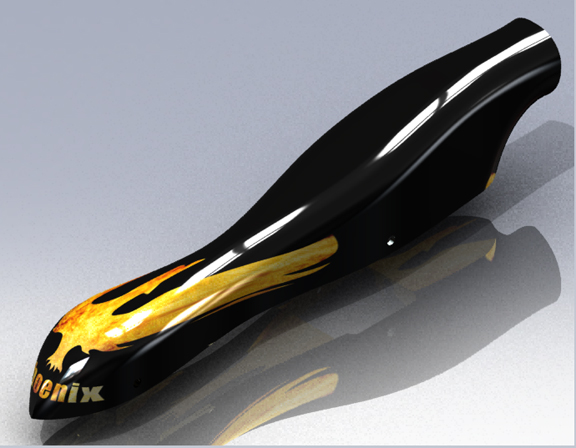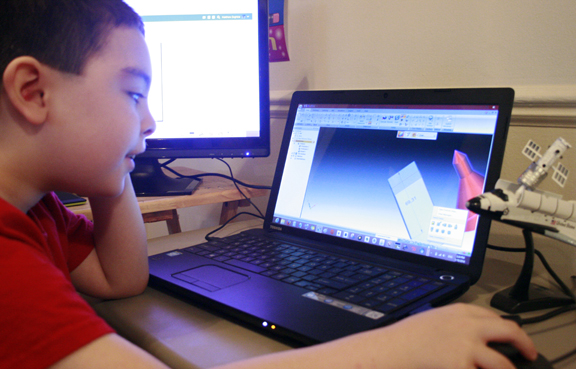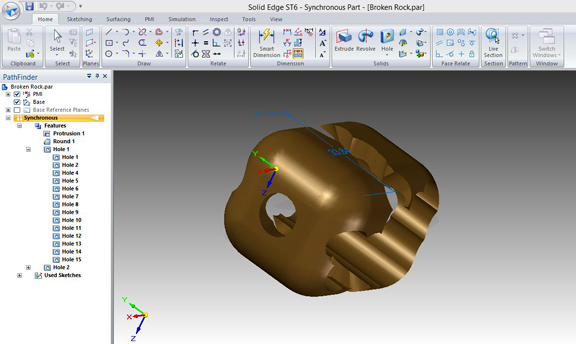Latest News
January 14, 2014
Justin Erickson, engineering technology instructor for Haile Middle School, Florida, somehow succeeded where many parents have admitted defeat. He managed to lure his students away from their video games with something else. That something turned out to be SolidWorks CAD software.
Last August, Braxton Cox and Colton Cox, twin brothers in Justin’s class, became the youngest Certified SolidWorks Associates (CSWA) after passing the industry certification exam. Braxton (age 14), a fan of the game Battlefield, recalled, “[The exam] wasn’t hard, but I wouldn’t say it was easy either. I had to study for it for about two and a half months.” Asked if he felt deprived of some of his favorite pastime activities while studying for the CSWA exam, Braxton replied, “No. I don’t think of working in SolidWorks as a chore. It’s something fun I like to do, like a video game.”
Braxton’s teacher Justin said, “Doug Wagner [Manatee county’s director of career and technical education] pushed teachers to get certified for the areas they teach. And these students leaving middle school or high school with the industry certification—that’s a huge advantage. Also, some colleges and universities honor these certifications.”
According to Justin, the software maker SolidWorks’ education licensing policy that provides home installation options for students made a difference. “Sure, they can’t run simulation at home [the operation would require a professional workstation, not a home computer], but they get ahead by working on parts at home,” he explained.
Braxton came in contact with SolidWorks in 6th grade. He saw some students’ CAD models of CO2 dragsters—miniature racing cars powered by CO2 rocket engines—and decided he needed to create his own. Braxton and his classmates also put their dragsters through SolidWorks Simulation to study stress distribution.
Noah Frantz (age 13), another student in Justin’s class, said, “I have always imagined things that are much too complicated to build in real life. With CAD software, I can put any ideas into work virtually without spending the materials needed to make it.”
Influenced by the aesthetics he observed in modern art, Noah observed, “You have to be intrigued by its look first, then you’d care to examine it further to understand its use.” He likes designing “things that not only catch your eyes but also have a function.”
Noah currently serves as the VP of the Technology Student Association (TSA), Haile Chapter. At times, he and his TSA officers have had to help instructors master the CAD software.
In Lansing, Michigan—more than 1,000 miles away from sunny Florida—another student discovered CAD when he enrolled in an introduction LEGO robotics class, offered at the local community college. Matthew McCormick, a home-schooled student, has already gotten a taste of 3D modeling in SketchUp and Autodesk 123D. In the summer of 2013, he began designing in Solid Edge from Siemens PLM Software.
Matthew (age 8 ) aspires to be an astronaut one day and work with NASA or SpaceX. Some of his personal designs in Solid Edge—“some spaceships and a broken sedimentary rock”—reflect his keen interest. Responding via email through his mother, Matthew said, “I would like to learn to create an International Space Station and spaceships with artificial gravity and radiation shields.”
SolidWorks, Siemens, and many rival CAD software developers maintain educational outreach programs to bring their software into the classrooms, hoping to cultivate brand loyalty among the next-generation. While the young CAD users are learning to operate professional 3D design packages, they may also be teaching the software makers a thing or two.
Noah imagines the day CAD software would become gesture-driven. “So you can pinch, pull, and mold a product with your hands,” he fancied—“a virtual model that can be manipulated physically.”
Braxton said he wants to create more organic surfaces and shapes—always a challenge in mechanical CAD programs. (This type of geometry is the domain of modeling programs widely used in film, game, and entertainment. Engineering software tends to offer only limited functions.)
When not working in CAD or studying, Noah likes to play the viola. He’s particularly proud that he can play the theme song from the movie Pirates of the Caribbean on the instrument.
Braxton sees potentials for ergonomic improvement in everything around him, from pencils to chairs. He likes to swim to relax.
Matthew’s favorite game is Spore, a world-creation game, because, he explained, “I can study about stars and create planets.”
Noah urges software makers to invest more in people like him and his classmates. “We’re the ones that will be filling the engineering jobs we’ve lost in the U.S. [to overseas],” he reasoned.
Instructor Justin routinely gets thank-you letters from parents, probably because “We have so many kids who are putting down their video games,” he observed.
(More reporting on young CAD users coming soon.)
Subscribe to our FREE magazine, FREE email newsletters or both!
Latest News
About the Author
Kenneth Wong is Digital Engineering’s resident blogger and senior editor. Email him at [email protected] or share your thoughts on this article at digitaleng.news/facebook.
Follow DE






